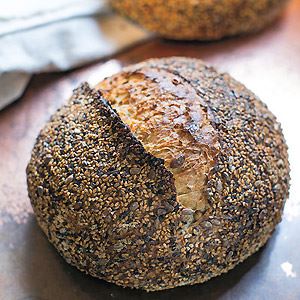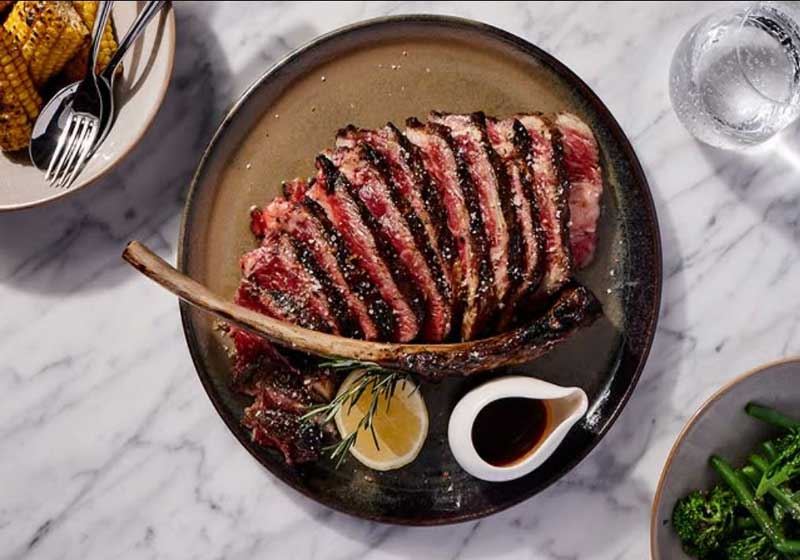Multigrain Loaf

Ingredients
The Starter Build:
30 g starter
15 g bakers flour
15 g whole-wheat flour
30 g water
The Dough:
55 g starter
235 g bakers flour
45 g whole-wheat flour
45 g rye flour
25 g white spelt flour
270 g water
7 g salt
30 g kibbled rye, soaked in
30 g water overnight
60 g pepitas (pumpkin seeds)
Semolina, for dusting
The Crust:
Sesame seeds
Linseeds
Sunflower seeds
Poppy seeds
Method
Bakery Notes:
We use a combination of seeds for the crust, but we don’t weigh them. You can use whatever seeds you like, depending on your taste – about 100 g in total. This is also true for the loaf, but if you do use kibbled rye, make sure you soak it overnight so the grain is softened and doesn’t draw moisture from the dough.
Starter Build:
Around 4–6 hours before you plan to mix your dough, combine the starter, flour and water for the starter build, mixing well to combine. You will use 55 g of this for the dough; retain the rest for maintaining your starter.
Build the Dough:
At least 30 minutes before you plan to mix the dough, combine the flours and water in a large mixing bowl. Mix them with your hands until thoroughly combined, then cover with a damp cloth and set aside for the autolyse. When the starter is ripe and bubbly, mix it with the flour and water mixture, then sprinkle over the salt and finish mixing the dough. Cover with a damp cloth and set aside in a warm place for at least 30 minutes, before your first set of folds. Add the soaked kibbled rye and pepitas as you do the first turn and fold, ensuring they are evenly distributed. Complete four sets of folds, resting the dough in between each one for 30–45 minutes. After your last set of folds, cover your dough with a damp cloth and leave to prove at room temperature for 2–3 hours.
Shape and Final Prove:
If you have multiplied the recipe, divide the dough into individual loaves before you pre-shape. Pre-shape the dough, cover with a damp cloth and leave it to rest on the bench for 15–20 minutes. Place the mixed seeds for the crust in a wide bowl. When the dough has relaxed, shape the dough as desired. Spray the top of the loaf with water or roll it over a damp tea towel, then roll it in the seeds to cover the loaf. Place it seam side up in a proving basket. You don’t need to flour the banneton for this bread, as the seeds will stop it from sticking. Cover with a damp cloth and set aside for a few hours, or in the fridge overnight, until ready to bake.
Bake Your Bread:
Preheat the oven to the maximum temperature and bake according to your preferred method. Once baked, tip the bread out of the pan onto a wire rack to cool.

Photo Credits: Bonnie Savage








